- info@aromantique.co.uk
- 07419 777 451
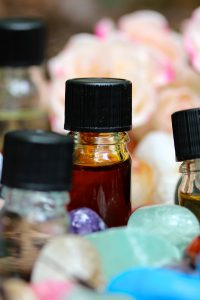 Heather Dawn Godfrey P.G.C.E., B.Sc. (Joint Hon)
Heather Dawn Godfrey P.G.C.E., B.Sc. (Joint Hon)
Gifts of nature, the healing qualities of plants range from physical to ethereal; we are inextricably connected to earths’ web of life.
….you who are born of the mountains and the forests and the sea can find their prayer in your heart. Kahlil Gibran
We share biological affinity with plants; simple examples being gaseous exchange and provision of vital nutrients that maintain and support bodily function, growth, tissue repair, energy production, and more.
In deed, healing plants and their essential oils have been used throughout history for their protective, restorative, rehabilitative, and hedonistic qualities, attributes observed and documented in ancient scriptures and medicinal texts and, more recently, affirmed in scientific journals and numerous research papers. (Godfrey 2022, 2019, 2018)
How essential oils support health and wellbeing
Perfume and incense bring joy to the heart. Proverbs 27:9
Essential oils are aromatic volatile terpene and terpenoid compounds, which are typically extracted from plants (herbs and trees, heart wood, bark, blossoms and flowers, fruits, leaves, stalks, seeds, roots, gums, and resins), mainly by steam distillation, or in the case of citrus fruits, by expression.
The process of extraction increases the concentration of essential oils, thus, their potency too; just one or two drops of essential oil is sufficient to procure significant effect. Applied as an aromatherapy treatment, their molecules are absorbed either via skin (administered in an emollient, such as vegetable oil, cream, lotion or ointment), or the respiratory system through inhalation of their vaporised droplets (applied, for example, via room diffusers, perfumes, or drops on a tissue, steam inhalation, and ‘aromasticks’); inhalation has a direct influence on the limbic (olfactory connection to the brain and neural pathways) and circulatory systems (absorption via alveoli capillaries and thence the organ systems). Certain essential oils are prescribed and administered by professional herbalists, doctors or pharmacists as medicine (contained in gel-like digestible capsules). (Godfrey 2022, 2019, 2018)
Essential oils develop within the plant during the secondary phase of metabolism (along with alkaloids, flavonoids, bitters and gums), a process instigated by photosynthesis. While not vital to the plants existence, essential oils play a significant role. For example, they stave infection, attract pollinators, repel predators, disarm invasive microbes, repair damaged tissue, and control and optimise the ambient environment (temperature and humidity) by creating a haze or mist, an auric vapour, which surrounds the plant (terpenes evaporate at high temperature, and consequently produce air flows that cool the plant and reduce transpiration). They relay messages from one part of the plant to another (thus, they are considered to be ‘hormone-like’), and to other plants in the immediate vicinity. (Godfrey 2022)
Similarly, essential oil molecules modulate various processes within the body. Their properties range across a spectrum, from immune support (anti-bacterial, anti-viral), tissue healing and regeneration, pain relieving, restorative, digestive, to psycho-somatic, revitalising, anti-anxiety, anti-depressant, uplifting, calming and grounding, and more. They are multi dynamic adaptogens (that is, they support the immune system and the body’s resilience to infection, disease and stress); they stimulate the limbic system (the emotional brain) to modulate mood and emotion, and stimulate hormone balance via the limbic systems connection to the pituitary gland. (Godfrey 2022, 2019, 2018)
Olfactory and endocannabinoid receptors
Some of these qualities are attributed, in part, to the affinity certain essential oil molecules (for example, beta-caryophyllene, a-pinene, limonene, linalool, eucalyptol and myrcene – see fig 1) share with the endocannabinoid system – hemp (from which cannabis is derived) contains cannabinoids, also volatile terpenes and phenolic compounds.
Olfactory receptors and endocannabinoid receptors are found scattered throughout the body in numerous organs and tissues (for example, the central nervous system, vascular system, lungs, gastrointestinal tract, reproductive organs, liver, spleen, brain stem, bones and skin). Endocannabinoid receptors are also found in the olfactory epithelium and the main olfactory bulb at the top of the nasal cavity, also the piriform cortex and other brain areas that process and code olfactory information.
Like the olfactory system, the endocannabinoid system plays a role in a range of functions and processes, which include sleep, mood, memory, learning, motor control, skin and nervous function, liver function, muscle formation and food intake, and interacts with the olfactory system to modulate processes such as odour sensitivity, olfactory learning and memory. However, the mechanisms by which endocannabinoid and olfactory receptors interconnect and interact are complex and still not completely realised; in deed, olfaction is an intricate process (see ‘scent detection and the olfactory system’ below).
Fig 1. Terpenes found in Hemp (Cannabis), CBD oil, and Essential Oils
beta-caryophyllene – activates CB2 (Cannabidiol) receptors which modulate immune cell function, pain relief and inflammation (also found in Black Pepper, Clove Bud, Melisa (Lemon Balm), and Ylang Ylang).
a-pinene – modulates pain relief and inflammation, promotes relaxation, aids memory and respiratory function, and supports the immune system (anti-oxidant and anti-infectious) (also found in Frankincense sacra, Cypress, Helichrysum (Immortelle), Juniper berry, Myrtle, Nutmeg, Pine, and Rosemary).
limonene – modulates the immune system, modulates inflammation, anti-tumour, eases bronchial conditions and soothes allergies (also found in Bergamot, Caraway, Grapefruit, Black Pepper, Bitter Orange, Lemon, Mandarin, and Palo Santo).
linalool – modulates pain relief and inflammation, supports the immune system (anti-infectious), protects the nervous system, eases anxiety and depression (also found in Basil linalool, Clary Sage, Coriander, Hyssop linalool, Lavender, Marjoram linalool, Neroli, Petitgrain, Thyme linalool, Ho Wood, and Ylang Ylang).
eucalyptol (1,8-cineole) – modulates inflammation and cytokine activity, supports the immune system (anti-oxidant, anti-infectious), eases chronic respiratory conditions and other chronic diseases (also found in Eucalyptus, Cajeput, Caraway, Ginger, Hyssop officinalis, Spike Lavender, Myrtle, Niaouli, Rosemary, Spanish Sage, and Tea Tree).
myrcene – supports the immune system (anti-oxidant, anti-infectious), eases neurological conditions (such as dystonia, epilepsy and Parkinson’s disease), and promotes relaxation (also found in Rosemary, Juniper Berry, Frankincense sacra, Lemongrass, and Yarrow).
(See my book Healing with Essential Oils to discover more about the chemical constituents found in essential oils.)
The olfactory system and scent detection
Be like the flower, turn your face to the sun. Kahlil Gibran
Scent molecules (terpenes and terpenoids) are detected (like a key in a lock) by olfactory receptors located at the top of each nasal cavity that, in turn, relay nerve impulses to the Limbic System located in the brain. As previously observed, odour receptors are also located in other areas of the body, such as the skin and other organs (heart, liver, lungs, kidneys and gastrointestinal tract). However, by grand design, it seems, proximity of the master olfactory portal in the roof of the nasal cavity ensures immediate awareness and instinctive reflexive responses.
The Limbic System incorporates various functional structures located in the central paleomammalian area of the brain (which include the amygdala, hippocampus and hypothalamus) that are responsible for basic physiological and emotional responses to sensory stimulation. The hypothalamus functionally connects the Limbic System to the frontal lobe (where the brain rationalises and makes sense of information and sensory input) and to the pituitary gland. The pituitary gland, also known as the master endocrine gland, initiates hormone release in response to sensory signals, activating either the sympathetic or parasympathetic nervous system, depending on the nature of the stimuli; the sympathetic nervous system prepares the body for ‘fight or flight’ (protection), and the parasympathetic nervous system maintains a state of peace and relaxation (rest and digest), and disengages the sympathetic nervous system post ‘alert’, returning the body to its optimal functional resting state.
When inhaled, some essential oil molecules will cross the blood brain barrier (especially sesquiterpenes, which are found, for example, in frankincense, carrot seed, cedarwood, German chamomile, ginger, helichrysm, myrrh, black pepper, patchouli, spikenard, and ylang ylang) where they interact with various receptor sites, such as, GABA and glutamate receptors, located in the hippocampus, thalamus, basal ganglia, hypothalamus, and brainstem (GABA is an amino acid that functions to reduce neuronal excitability by inhibiting nerve transmission).
The mechanisms by which essential molecules are absorbed and interact within the body are very complex and, although modern technology affords much insight, are still not fully realised. However, our body is clearly ‘wired’ to receive phyto-molecules; verified by the presence of numerous (olfactory and endocannabinoid) receptor sites scattered throughout the body and the multilateral physical and psychosomatic responses instigated by detection.
(Godfrey 2022, 2019, 2018)
Healing with Essential Oils
Rose (Rosa centifolia/damascena) provides a lovely example of how diverse the action of essential oils can be. The qualities of rose range from hedonistic, aphrodisiac, anti-depressant, hypnotic, and anti-convulsive, to anti-oxidant, anti-inflammatory, analgesic, antitussive (relieves coughs), antibacterial, and bronchodilatory.
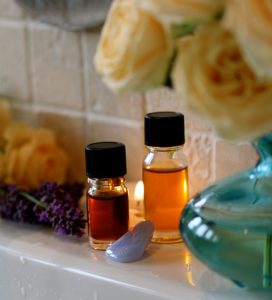 Some of the molecules found in rose oil are barely detectable yet these synergistically contribute significantly to its scent and therapeutic properties (synergy is not unique to rose oil as most essential oils demonstrate synergistic interaction between some or all of their constituents).
Some of the molecules found in rose oil are barely detectable yet these synergistically contribute significantly to its scent and therapeutic properties (synergy is not unique to rose oil as most essential oils demonstrate synergistic interaction between some or all of their constituents).
To illustrate, citronellol and geraniol, are predominant components found in rose essential oil, both of which exude floral, sweet, rose-like scents, yet the perfume of the complete essential oil is acknowledged as rich, intense, sweet, powerful beeswax-like, highly floral, rosy, with waxy, floral, spicy, green, metallic, body notes, then tenacious warm floral spicy dry out notes.
Floral, sweet, rose-like scents are also observed amongst constituent ‘notes’ in other essential oils that contain citronellol (for example geranium and citronella), and geraniol (for example, bergamot, palmarosa, thyme, and geranium). Each molecule comprising an essential oil contributes a unique ‘tone’ that combines with other molecules in various arrangements to create specific ‘tunes’ or ‘melodies’.
(Godfrey 2022)
That which we call a rose, by any other name would smell as sweet. Shakespeare, Romeo and Juliette
Lavender (Lavandula angustifolia) provides another illustration. Linalool and linalyl acetate are two predominant compounds found in this essential oil, collectively making up to 90% of lavenders chemical constituents.
The scent profile of linalool is described as citrus, floral, sweet, woody and green, and linalyl acteate, is described as sweet, green, floral and spicy, with a clean woody, terpy, citrus nuance.
Linalool is sedative, analgesic and anti-inflammatory, and also features in large quantity in other essential oils, such as, ho wood, rosewood, thyme (CT. linalool), marjoram (CT. linalool), and basil (CT. linalool).
Linalyl acetate is anti-inflammatory, sedative, relaxant and anti-hypertensive, and is present in high amount in Clary sage, petitgrain, rose, mints and bergamot FCF essential oils.
Lavender angustifolia’s overall therapeutic profile is, including those qualities mentioned above, anti-depressant, anti-microbial, antiseptic, anti-spasmodic, anti-toxic, anti-viral, bactericidal, cleansing, deodorant, hypotensive, skin healing and toning.
Spike Lavender (Lavandula latifolia), on the other hand, contains linalool and, in place of linalyl acetate, 1,8-Cineole (Eucalyptol) and a lesser amount of Camphor. 1,8-Cineole is expectorant, anti-inflammatory, antispasmodic and improves cerebral blood flow; its scent is ‘eucalyptus-like’. Camphor instigates vasodilation (dilates blood vessels and decreases blood pressure); its scent is fresh and warm. The overall scent profile of Spike Lavender thus differs from Lavender angustifolia and is accordingly described as eucalyptus, herbal, camphor, and medicinal.
These examples demonstrate how intricate and complex essential oils are. Each essential oil comprises a unique array of chemical constituents, the presence and quantity of which synergistically determine and distinguish that oils scent dynamic and therapeutic properties and qualities.
As previously established, essential oils are generally physically protective and restorative and psycho-emotionally vitalising, warming, grounding and calming. Their actions complement and gently support at one and the same time physical, mental and spiritual states.
In deed, the perception of scent instantly instigates a reflexive response within the brain that may inspire mood and emotion, compound and/or trigger memories, and conjure images – a blossoming garden in summer, woody earthy forests in spring, sweet citrus orchards in autumn, – or simply but significantly, instil feelings of peace and calm, of feeling bright and awake, and more.
The sensual experience of scent detection also draws attention to the moment, thus essential oils are wonderful companions for meditation, prayer and for moments when we simply want to centre our attention in the here and now. Thus, they are ideal companions to call upon when dealing with stress and stress related issues, including mild depression, anxiety, feelings of loss and grief, or to journey with through change and transition, or simply to compound and celebrate wellness, wellbeing, a sense of contentment, and joyful events.
The sense of smell is very personal; what one person finds pleasant another person may dislike or feel indifferent toward. Using our own nose, however, we are usually able to detect which scent is good for us at a given moment.
The essential oils listed below are among those most frequently cited as being anti-depressant and anti-anxiety, uplifting and calming. These oils may also alleviate stress related conditions, such as, insomnia, headaches, and skin disorders (eczema, psoriasis and so on), and more.
Essential oils to harmonise mood and emotion
Bergamot
Cedarwood
Chamomile Roman
Citronella
Clary sage
Corriander
Frankincense
Geranium Rose
Grapefruit
Lavender
Lemon balm (Melissa)
Lemongrass
Marjoram
Neroli
Orange
Patchouli
Peppermint
Petitgrain
Rose
Rosemary
Sandalwood
Spikenard
Vetivert
Ylang Ylang
Applying essential oils
Remember, do not apply essential oils neat to your skin, but add one or two drops to an emollient, and do not take essential oils internally unless administered, prescribed and monitored by a professional healthcare practitioner.
Vaporising a few drops of essential oils in a room diffuser, or inhaling one or two drops on a tissue or from a nasal inhaler, or applied as a personal perfume infused in vegetable oil ( applied via massage or roller bottle) or cream, are all fun, safe and very effective ways to dispense essential oils in order to experience their scents and benefit from their physical and psycho-emotional gifts.
Self-massage is also a lovely way to apply essential oils (essential oil molecules penetrate the epidermis and find their way into the circulatory system). For example, add three to six drops of essential oil to a vegetable oil or non-perfumed lotion, and then apply, using a rhythmic motion (stroking or circular movements) to face, arms, hands, legs and feet – ideally after a bath or before bed.
Go to your fields and your gardens, and you shall learn that it is the pleasure of the bee to gather honey of the flower, but it is also the pleasure of the flower to yield its honey to the bee. For to the bee a flower is a fountain of life, and to the flower a bee is a messenger of love, and to both, bee and flower, the giving and the receiving of pleasure is a need and an ecstasy. Kahlil Gribran
You will find valuable insight, practical details and reference information about the various qualities of these and numerous other essential oils in my book Healing with Essential Oils, and my other books Essential Oils for the Whole Body and Essential Oils for Mindfulness and Meditation (published by Inner Traditions, Vermont USA and available to purchase from most high street or online book suppliers).
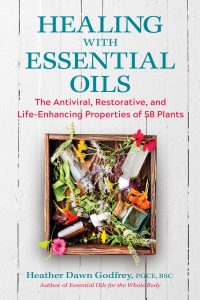
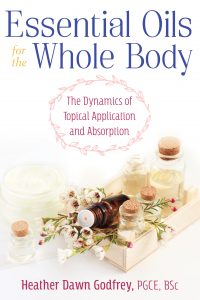
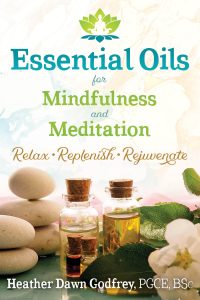
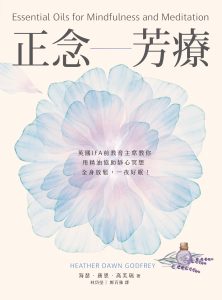
References
Agatonovic-Kustrin, S., Kustrin, E., Morton, D. W. (2019) Essential oils and functional herbs for healthy aging. National Library of Medicine. PubMed. Neural Regen Res. 14(3): 441-445. https://pubmed.ncbi.nlm.nih.gov/30539810/
Ali, B., Al-Wabel, N. A., Shams, S., Ahamad, A., Khan, A. A., Anwar, F. (2015) Essential oils used in aromatherapy: A systematic review. Asian Pacific Journal of Tropical Biomedicine, Elsevier volume 5 issue 8 p 601-616. https://cyberleninka.org/article/n/3650/viewer
Charmine, I. PhD, Oken, B. MD, PhD (2016) Aroma Effects on Physiologic and Cognitive Function Following Acute Stress: A Mechanism Investigation. Journal of Alternative and Complementary Medicine. 1; 22(9): 713-721. https://pubmed.ncbi.nlm.nih.gov/27355279/
Clarke, S. (2002) Essential Chemistry for Safe Aromatherapy. Churchill Livingstone. Harcourt Publishers, London
de Sousa, D. P. (2017) Essential Oils and Their Constituents: An Alternative Source for Novel Antidepressants. Molecules, 20(8): 1290. https://www.ncbi.nlm.nih.gov/pmc/articles/PMC6152054/
do Vale T.G., Furtado E.C., Santos Jr J. G., Viana G.S.B. (2002) Central effects of citral myrcene and limonene, constituents of essential oil chemotypes from Lippia alba (Mill.) n.e. Brown. NIH National Library of Medicine 9(8):709-14. https://pubmed.ncbi.nlm.nih.gov/12587690/
Ebrahimi, H., Mardani, M., Basirinezhed, M. H., Hamidzadeh, A. Eskandari, F. (2021) The effects of Lavender and Chamomile essential oil inhalation aromatherapy on depression, anxiety and stress in older community dwelling people: A randomized Controlled trail. Explore (NY). S1550-8307 (21)00001-X. https://pubmed.ncbi.nlm.nih.gov/33454232/
Emer, A. A., Donatello, N. N., Batisti, A. P., Belmonte, L. A. O., Santos, A. R. S., Martins, D. F. (2018) The role of the endocannabinoid system in the antihyperalgesic effect of Cedrus atlantica essential oils inhalation in a mouse model of postoperative pain. Journal of Ethnopharmacology, Elsevier, vol 210 p 477- 484 https://pubmed.ncbi.nlm.nih.gov/28917977/
Fung, T. K. H.; Lau, B. W. M.; Ngai, S. P. C.; Tsang, H. W. T. (2021) Therapeutic Effect and Mechanisms of Essential Oils in Mood Disorders: Interaction between the Nervous and Respiratory Systems. International Journal of Molecular Science 22(9): 4844
Gibran, K . (1980) The Prophet, Wlliam Heinmann, Pan Books. ISBN 0-330-26220-3
Godfrey, H. D. (2022) Healing with Essential Oils. Healing Arts Press, Rochester, Vermont USA
Godfrey, H. D. (2019) Essential Oils for the Whole Body. Healing Arts Press, Rochester, Vermont USA
Godfrey, H. D. (2018) Essential Oils for Mindfulness and Meditation. Healing Arts Press, Rochester, Vermont USA
Gupta, A., Coogler, G. (sourced June 2021) Traditional plants that engage the endocannabinoid system and their medicinal potential. Canna Foundation (Scientific studies and cannabis testing. https://www.fundacion-canna.es/en/traditional-plants-engage-endocannabinoid-system-and-their-medicinal-potential
Han, X., Gibson, J., Eggett, D. L., Parker, T. L. (2017) Bergamot (Citrus bergamia) Essential Oil Inhalation Improves Positive Feelings in the Waiting Room of a Mental Health Treatment Centre: A Pilot Study. DOI: 10.1002/ptr.5806. 31(5): 812-816. https://pubmed.ncbi.nlm.nih.gov/28337799/
Herz, R. (2016) The Role of Odour Evoked Memory in Psychological and Physiological Health. Brain Science vol 6(3). https://www.ncbi.nlm.nih.gov/pmc/articles/PMC5039451/
Hogratanaworakit, T (2009) The Relaxing effect of rose oil on humans. National Library of Medicine. PubMed. Nat Prod Commun. PMID: 19370942. 4(2):291- 6. https://pubmed.ncbi.nlm.nih.gov/19370942/
Johnson, S. A., Rodriguez, D., Allred, K. (2020) A Systematic Review of Essential Oils and the Endocannabinoid System: A Connection Worthy of Further Exploration. Hindawi Journals. Evidence-Based Complementary and Alternative Medicine.. Article ID 8035301. https://www.hindawi.com/journals/ecam/2020/8035301/
Lillehei, A. S., Halcon, L. L. (2013) A systematic review of the effect of inhaled essential oils on sleep. Journal of Alternative and Complementary Medicine. DOI: 10.1089/acm.2013.0311. 20(6): 441-51. https://pubmed.ncbi.nlm.nih.gov/24720812/
Lizarraga-Valderrama, L. (2021) Effects of essential oils on central nervous system: Focus on mental health. Phytotherapy Research. DOI: 10.1002/ptr.6854. 35(2): 657-679. https://onlinelibrary.wiley.com/doi/full/10.1002/ptr.6854
Maleki, N. A., Maleki, S. A., Bekhradi, R. (2013) Suppressive Effects of Rosa Damascena Essential Oil on Naloxone-Precipitated Morphine Withdrawal Signs in Male Mice. Iran Journal of Pharmaceutical Research. PMCID: PMC3813277. https://pubmed.ncbi.nlm.nih.gov/24250642/
Olofsson, J. K., Ekstrom, I., Lindstrom, J., Syrjanen, E., Stigsdotter-Neely, A., Nyberg, L, Jonnson, Sara, Larsson, M. (2020) Smell-Based Memory Training: Evidence of Olfactory Learning and Transfer to the Visual Domain. Chemical Senses, Oxford Academic volume 45 issue 7 p 593-600. https://academic.oup.com/chemse/article/45/7/593/5869423
Peana, A. T., D’Aquila, P. S., Panin, F., Serra, G., Pippia, P., Moretti, M. D. L. (2002) Anti-Inflammatory activity of linalool and linalyl acetate constituents of essential oils. Phytomedicine. National Library of Medicine. PubMed 9(8): 721-6. https://pubmed.ncbi.nlm.nih.gov/12587692/
Pereira I., Severino P., Santos A.C., Silva A.M., Souto E.B. (2018) Linalool bioactive properties and potential applicability in drug delivery systems. Colloids and Surfaces B Biointerfaces 171:566-578. NIH National Library of Medicine https://pubmed.ncbi.nlm.nih.gov/30098535/
Salehi B., Upadhyay S., Orhan I.E. Jugran A.K., Jayaweera S.L.D., Dias D.A., Sharopov F., Taheri Y., Martins N., Baghalpour N., Cho W.C. Sharifi-Rad J. (2019) Therapeutic Potential of a- and B-Pinene: A Miracle Gift of Nature. Biomolecules NIH National Library of Medicine 9(11): 738 https://www.ncbi.nlm.nih.gov/pmc/articles/PMC6920849/
Sanchez-Vidana, D. I., Ngai, S., P-C, Chow, J. K-W Chow, Lau, B. W-M, Tsoan, H. W-H (2017) The Effectivess of Aromatherapy for Depressive Symptoms: A Systematic Review. Evidence Based Complementary and Alternative Medicine. 5869315. https://www.hindawi.com/journals/ecam/2017/5869315/
Soel G.H., Kim K.Y. (2016) Eucalyptol and its role in chronic diseases. Advances in Experimental Medicine and Biology. NIH National Library of Medicine 929:389-398 https://pubmed.ncbi.nlm.nih.gov/27771935/
Setzer, W. N. (2009) Essential Oils and anxiolytic aromatherapy. Sage Publications, Journal of Natural Product Communications vol 4 no 9 p 1305- 1316.
Terral, G., Marsicano, G., Grandes, P., Soria-Gomez, E. (2020) Cannabinoid Control of Olfactory Processes: The where it matters. PMC7230191. Genes (Basal) 11(4): 431. https://www.ncbi.nlm.nih.gov/pmc/articles/PMC7230191/
The Good Scents Company (accessed July 2021) http://www.thegoodscentscompany.com/data/rw1007872.html
Tisserand, R., Young, R. (2014) Essential Oil Safety 2nd ed. Churchill Livingstone, Elsevier, London
Turcotte C., Blanchet M-R, Laviolette M., Flamand N. (2016) The CB2 receptor and its role as a regulator of inflammation. Springer Cellular and Molecular Life Sciences 73(23): 4449-4470 https://www.ncbi.nlm.nih.gov/pmc/articles/PMC5075023/
Yu L., Yan J., Sun Z. (2017) D-limonene exhibits anti-inflammatory and antioxidant properties in an ulcerative colitis rat model via regulation of iNOS, COX-2, PGE2 and ERK signalling pathways. Molecular Medicine Reports. Spandidos Publications 6241 p 2339-2346 https://www.spandidos-publications.com/mmr/15/4/2339

Heather Dawn: Godfrey. P.G.C.E., B.Sc. (Joint Hon)
Author of Healing with Essential Oils, Essential Oils for the Whole Body, and Essential Oils for Mindfulness and Meditation, published by Healing Arts Press, Inner Traditions USA.
We are surrounded by viruses and other microbes with which we share a symbiotic and, mostly, healthy and supportive relationship. Some microbes are pathogenic, and some become pathogenic if they proliferate without being kept in check. A healthy immune system works in collaboration with viruses and microbes to maintain internal equilibrium and resilience.
COVID-19 is a novel virus with mild to severe symptoms. In most cases people are not even aware they are infected; between 80 and 95% of those infected (depending on their background health) experience no symptoms or mild ‘flu-like symptoms and recover without ill effect. Some people, particularly the very elderly and people who have underlying serious or chronic co-morbidities, experience severe or acute symptoms (a chronic cough, chest tightness, shortness of breath, cognitive dysfunction and extreme fatigue), which may last five to seven days; these symptoms may linger for up to twelve weeks, or even longer in some cases (Post COVID-19 Syndrome).
One of the less severe, but none-the-less distressing, symptoms of COVID-type infection is loss of the sense of smell. Recent research indicates that essential oils have a significant role to play as aids to recovery of viral initiated loss of sense of smell.
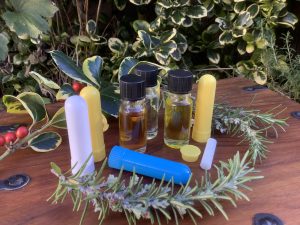 While viral infection may ‘take down’ the ability of olfactory neurons to register scent molecules, some scent molecules can still traverse the epithelium and directly enter the brain. Smelling a scent may evoke memories, feelings and sensations, and inspire imagination, in a way that may begin to re-awaken or stimulate olfactory neural pathways. At the same time, essential oil molecules may also aid tissue regeneration and repair the olfactory epithelium.
While viral infection may ‘take down’ the ability of olfactory neurons to register scent molecules, some scent molecules can still traverse the epithelium and directly enter the brain. Smelling a scent may evoke memories, feelings and sensations, and inspire imagination, in a way that may begin to re-awaken or stimulate olfactory neural pathways. At the same time, essential oil molecules may also aid tissue regeneration and repair the olfactory epithelium.
Putting this to the test, four essential oils (clove, eucalyptus globulus, lemon and rose) were selected for ‘smell training’ exercises. (Hopkins 2021, Hummel 2018, 2009) Between them, these oils express a diverse and complex range of scent nuances, while each essential oil also exudes its own unique and distinctive odour quality. These chosen scents also express odour qualities that correlate with three of the four basic tastes (sweet, bitter and sour). Forty five per cent of smell training participants regained their sense of smell.
Along with their sensual qualities and tissue healing properties, these oils also demonstrate anti-viral and anti microbial qualities, and various psycho-emotional qualities, that may alleviate other post-viral symptoms of COVID-19, such as fatigue, depression, and lack of concentration, while also staving residual infection and averting further viral spread.
To learn more about viruses, essential oils that may support olfactory rehabilitation and/or may alleviate other related conditions or co-morbidites, please refer to my full article here.
Please refer to my books for information about the individual properties and qualities of essential oils, and how to apply them safely and effectively: Healing with Essential Oils, Essential Oils for the Whole Body, and Essential Oils for Mindfulness and Meditation, published by Healing Arts Press, Inner Traditions USA.
References
Hopkins, C. Prof. (8th January 2021) Hope for recovery for loss of smell for COVID patients. Sky News Interview https://www.facebook.com/watch/?v=857906648400464
Hummel, T. (2018) A simple flu, and simple infection: how effective is smell training at curing infection? BCC News interview. https://www.bbc.co.uk/news/av/science-environment-46386497
Hummel, T., Rissom, K., Redden, J., Hahner, A.,Weidenbecher, M., Huttenbrink, K-B. (2009) Effects of Olfactory Training in Patients with Olfactory Loss. Laryngoscope. https://onlinelibrary.wiley.com/doi/abs/10.1002/lary.20101
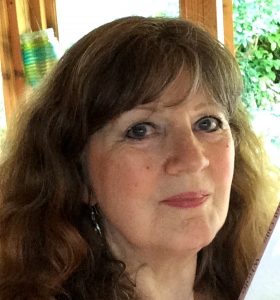


Ellen Kamhi Ph.D., RN, AHN-BC, RH(AHG), The Natural Nurse® has been involved in Natural Medicine since 1973, when she directed a program in Ethnobotany at Cochise College in Douglas, Arizona. Dr. Kamhi attended Rutgers and Cornell Universities. She sat on the Panel of Traditional Medicine at Columbia Presbyterian Medical School and is a Medical School Instructor, teaching Botanical Pharmacology. She was nominated for the March of Dimes, Woman of Distinction 2004 and received the J.G Gallimore award for research in science.
Dr. Kamhi is a professional member of the American Herbalist Guild (AHG), and is nationally board certified as an Advanced Holistic Nurse (AHN-BC). Ellen Kamhi is the author of many books, including Cycles of Life, Herbs for Women, The Natural Guide to Great Sex, WEIGHT LOSS-the Alternative Medicine Definitive Guide. Additionally, she co-authored with Dr. Eugene Zampieron in The Natural Medicine Chest and Arthritis, The Alternative Medicine Definitive Guide. She hosts radio shows daily, including on Gary Nulls Progressive Radio Network. Furthermore, she is regularly quoted in numerous mainstream media including NewsMax, Marie Clare, Globe, Latina, Self, Woman’s World, Prevention, Cosmopolitan and Glamour.
She is on the Peer Review Editorial Board of several journals/organizations, including: Alternative Therapies in Health and Medicine, Natural Medicine Journal, Natural Standard Database.
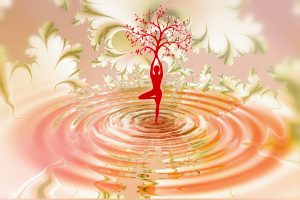
Ellen Kamhi, PhD, RN, AHG, AHN-BC is a leader in the nutraceutical industry, recognised as a consultant specialising in regulatory issues, formulation and product education. She is a professional member of the American Herbalist Guild (AHG), nationally board certified as a holistic nurse (AHN-BC), and is a medical school instructor and author of several top selling books in the Natural Medicine Field.
Ellen, along with Dr Z, interviews a range of healthcare and wellbeing professionals, natural living experts, and authors, on her New York-based radio show (aired globally), exploring numerous topics and issues relating to healthy lifestyle, diet and nutrition, natural antibiotics and remedies, and much more. She recently featured in Oprah Magazine, sharing her extensive knowledge about medicinal herbs.
You will discover details about the fifteen Serenity Oils, and other oils, how to apply essential oils safely, how to blend them together to make pleasing scents and remedies, how to combine essential oils with other subtle elements such as colour, and gemstone, and much much more! These books provide a valuable home use reference and a sound foundation for you to continue to ‘grow’ and build your knowledge. Enjoy!!!
Essential oils have become so popular. It’s nice to have the opportunity to read a book combining mindfulness, meditation and essential oils. I would definitely recommend reading this book. When, how, where and the best time to use the essential oils is outlined throughout the book. A great reference book too. Meryl-Sue (Netgalley)
This book is fantastic! I have utilised it many times and continue going back to it for all the wonderful information that is in it. Lesley J (Netgalley)
This is a great book! It could be your all telling oil book. I learned so much about the oils that I didn’t already know. Louanne S (Netgalley)
I am new to using essential oils and am glad that this book has most of the information we need. It includes detailed information, pictures, and even some recipes. I’m glad I gave this book a shot. Will definitely be using some of the concepts and recipes. Misty S (Netgalley)




Heather Dawn: Godfrey. P.G.C.E., B.Sc. (Joint Hon)
Based in San Antonio, Texas, USA, radio hosts Marc and Nikki share their special interest in promotion of natural medicine and the significant role plants play in managing and maintaining health and wellbeing.
I was delighted to be invited as a guest to discuss with Marc and Nikki the many ways of applying the qualities of essential oils safely and effectively. We talk about both topical and internal application and explore appropriate application and the boundaries of use, and discuss the wonderful effectiveness of essential oils when they are applied diligently, focusing particularly on their anti-microbial and skin restorative and regenerative, and psycho-emotional properties.
The interview begins 10 minutes in to the show.
 Click here to listen to the interview
Click here to listen to the interview
Click here for more information about Marc and Nikki and their radio show
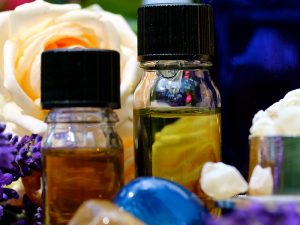 Click here for more information about how to apply and store essential oils safely
Click here for more information about how to apply and store essential oils safely
Click here for more information about what is an essential oil
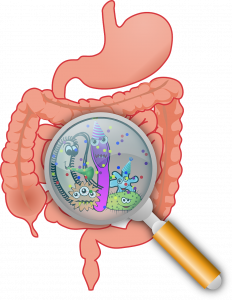
Heather Dawn: Godfrey. P.G.C.E., B.Sc. (Joint Hon)
The article below includes excerpts from my new book, Healing with Essential Oils, published by Inner Traditions, Vermont USA
The human micro biome consists of trillions of microbes, including bacteria and fungi, which symbiotically live in and on the body – on the skin, in the gut, and in cavities such as the mouth, ears and vagina. The micro biome plays a significant role in protecting and maintaining immunity, and aids a number of vital bodily functions: for example, assisting the breakdown and synthesis of nutrients in the gut and aiding their appropriate absorption, and providing a protective barrier against invasion or proliferation of harmful microbes and pathogens. We coexist with microorganisms; our body houses, feeds, and depends on their presence to maintain functional equilibrium. Poor diet, sugary refined foods, overuse of antibiotics and pharmaceutical drugs, stress, and illness, among other factors, can disrupt the harmonious balance of the micro biome, and increase our susceptibility to pathogenic invasion. (Essential Oils for the Whole Body 2019 p 70)
So, our first, long-lasting, line of defence, when considering immunity, is to support our micro biome (and thus also our health and vitality through increased opportunity of optimum nourishment – ease of absorption and assimilation of vital nutrients): eat nutritionally rich, fresh, 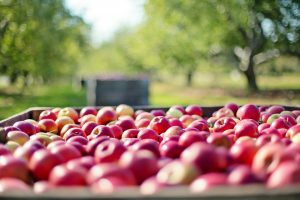 seasonal, unrefined, organic whole foods, especially green vegetables, fruits, nuts, beans and other legumes, herbs and spices, fermented foods, and so on; drink plenty of water to hydrate and oxygenate cells, and flush out waste material from the system; also, fresh air, sunlight (photochemical formation of vitamin D), walking (movement and motion) and gentle exercise (to stimulate peristalsis in the gut, stimulate the lymphatic system, and remove waste products efficiently from the body). A plants micro biome can feed the body’s micro biome too, so leave the skin on organic vegetables and fruits, and eat these raw or just lightly cooked. EMF’s (electromagnetic fields) also disrupt the micro biome, so limit exposure to these as much as possible (turn off computers, mobile phones, and other remote signalling devices when not in use).
seasonal, unrefined, organic whole foods, especially green vegetables, fruits, nuts, beans and other legumes, herbs and spices, fermented foods, and so on; drink plenty of water to hydrate and oxygenate cells, and flush out waste material from the system; also, fresh air, sunlight (photochemical formation of vitamin D), walking (movement and motion) and gentle exercise (to stimulate peristalsis in the gut, stimulate the lymphatic system, and remove waste products efficiently from the body). A plants micro biome can feed the body’s micro biome too, so leave the skin on organic vegetables and fruits, and eat these raw or just lightly cooked. EMF’s (electromagnetic fields) also disrupt the micro biome, so limit exposure to these as much as possible (turn off computers, mobile phones, and other remote signalling devices when not in use).
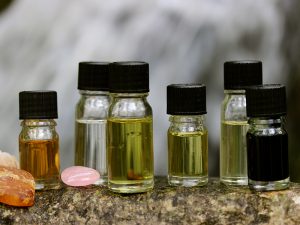 Essential oils to support the immune system
Essential oils to support the immune system
Essential oils are (with varying degrees of strength) anti-microbial, anti-fungal, anti-inflammatory, and mucolyptic. They also aid tissue regeneration.
Daily exposure to microbes enables the body to develop natural immunity. Remedies can be appropriately applied if and when required. Essential oil components number from a few to several hundreds – many are present in minute quantities, a few are present in large quantity. Their composition is complex. This means antimicrobial resistance to essential oils is potentially less likely than for conventional antibiotics; although, this cannot be taken for granted. See here for more information about applying essential oils safely, and using essential oils generally.
Essential oils are also very effective, even when applied in very small amounts, for psycho-emotional conditions (low mood, anxiousness, brain fog, etc.), for minor infections (coughs, colds, insect bites) and for skin conditions (cuts, grazes, eczema, dry skin, etc.).
For acute, potentially infectious conditions, severe cases of influenza, or other viral conditions, or for conditions you are unsure of, seek medical advice.
Powerful to moderate anti-microbial essential oils are listed below. Many of these essential oils are irritant and sensitising to the skin, mucous membrane and airways, especially when they are directly inhaled, even in small quantity, so apply them with careful consideration and in moderation.
All essential oils are highly concentrated volatile phyto-chemicals and, by their very nature, exhibit propensity to cause irritation, sensitisation, and sometimes an allergic reaction, especially if they are applied in large amounts, are over-used, or otherwise inappropriately applied.
Please note:
For comprehensive information about the safe and effective application of essential oils, how to blend them together, and much more, please refer to my book:

Meanwhile………
Click here for information about appropriate application of essential oils
Click here for information about measuring essential oils for personal use
Click here for information about methods of use
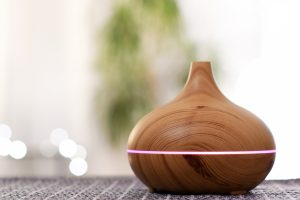 High quantity of essential oil is required to fumigate an environment (at least 30 drops – this will depend on the size of a room or space). To fumigate a room efficiently, close all doors and windows to contain the essential oil vapours, and diffuse essential oils into the atmosphere for 30 minutes. Leave the room during fumigation. Once fumigation is complete, open windows and doors to allow inflow of fresh air to clear residue vapours.
High quantity of essential oil is required to fumigate an environment (at least 30 drops – this will depend on the size of a room or space). To fumigate a room efficiently, close all doors and windows to contain the essential oil vapours, and diffuse essential oils into the atmosphere for 30 minutes. Leave the room during fumigation. Once fumigation is complete, open windows and doors to allow inflow of fresh air to clear residue vapours.
Herbs, such as sage, rosemary, and juniper can be used instead of essential oils – these are usually ‘smoked or smudged’, that is, smouldered, to cleanse the atmosphere.
Add up to 15 to 20 drops of essential oil to hand sanitisers (non-perfumed liquid soap dispensers). Do not add essential oils to antibacterial sanitisers or pre-scented sanitisers (it is not necessary and may cause an irritant reaction). Soap, itself, is antibacterial – soap and water (careful hand washing and drying) is usually sufficiently effective.
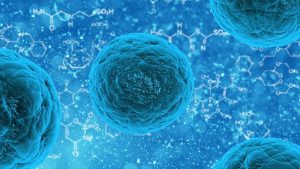 Essential oils with anti-microbial properties
Essential oils with anti-microbial properties
Please note that some of the essential oils listed below are strong irritants and sensitisers. Always check and reference the properties, qualities and contra indications of an essential oil before you apply it.
Examples of single essential oils with strong to medium anti-microbial properties
Cinnamon leaf and bark
Citronella
Clove bud
Eucalyptus blue gum and globulus
Geranium
Lavender
Lemon
Lemongrass
Pine
Tea tree
Thyme red
2-3 drops on a tissue and inhaled, 2-4 drops in steam inhalation, 2-4 drops in 10ml of carrier medium (vegetable oil, non-perfumed, lotion, cream, or aqueous gel) – do not use these blends in bath.
Click here for further instructions about methods of use
and
Click here for more detail about safe and appropriate application refer to my book (available at most book outlets) “Essential Oils for the Whole Body”
In addition to their antibiotic effects, oils react to a change of locality. From a distance this phenomenon seems to us to be the most important one, for, by changing the ecological condition which made possible the development and pathogenic growth of the germs, the oils stand in the way of their survival by preventing the body from building up resistances or adapting to the attacking agent. Better still, they protect against the return of the germs, both in the short and long term.
Dr Jean Valnet, 1980, The Practice of Aromatherapy, p47
Surely this is the key factor; the antiseptic power of essences does not diminish nor become blunted with the passing of time. Why not? it is hard to find a satisfactory answer, but perhaps it is because these natural substances, besides jugulating infections, reinforce the organism’s own defence mechanisms. They are in fact powerful alternatives. Furthermore, the organism does not appear to become accustomed to aromatherapy in the way that it does to synthetic sleeping pills, for instance, or – in the case of both body and germs – to the many forms of treatment using antibiotics.
Dr Jean Valnet, 1980, The Practice of Aromatherapy, p 45
References
Heather Dawn: Godfrey. P.G.C.E., B.Sc. (Joint Hon)
The prestigious Janey Loves Platinum Awards originated in 2018, and are presented for excellence and innovation for Natural, Organic, and Eco products and services. These Awards present an amazing opportunity, not only to showcase, but also to raise public awareness of the scope of choice and availability of ‘kind to earth’ innovations. In deed, there is something for everyone. These awards demonstrate that we CAN make a difference through the consumer choices we make.
I gain so much more from entering the competition than winning an Award (for which I am, even so, extremely appreciative). Simply through participation, for example, I discover a community of people striving to make a positive difference through their creations, wares and services, some of whom may have remained invisible to me but for me stepping out of my bubble and ‘having a go’. Recent global events will impact our economy in ways yet to unfold. It seems more important than ever to support small innovative business, and each other, to bolster resilience and transfiguration as we positively move forward. We each have something of value to contribute. In this context, competition slides into the background to make way for a shared sense of greater purpose.
The product I offer to this platform is my books.
The objective of my books, Essential Oils for the Whole Body and Essential Oils for Mindfulness and Meditation, is to provide a ‘road map’ to the safe and effective application of essential oils – to support the ‘everyday user’, student and practitioner so they may discover for themselves the many benefits and qualities essential oils gift, and how to apply them confidently, safely, effectively and creatively.




Aromantique as a business incorporates three dynamic strands; professional training, aromatherapy treatments, and related books and publications.
My aromatherapy studio is based in Lyme Regis, the historical sea town nestled on the south Jurassic coast at the border between East Devon and West Dorset. Thus, my clients are a mix of holiday visitors and local residence. I prefer to engage with students in person rather than via ‘virtual’ media, especially as much of what we do involves experiential tasks (for example, it’s impossible to virtually ‘smell’ the scent of an oil, plant or flower).
Essential Oils for Mindfulness and Meditation (Janey Loves 2019 Platinum Awards winner), and Essential Oils for the Whole Body (Janey Loves 2020 Platinum Awards winner) are published by Healing Arts Press Inner Traditions, Vermont USA. – Essential Oils for Mindfulness and Meditation is also published in Traditional Chinese.
As my age determines, I have travelled a long and varied road. I learnt to meditate in the early ‘70’s, when I was a teenager, and, at the same time, serendipitously, was introduced to the tenets of complementary medicine (or alternative medicine as it was coined then). I met and worked for Robert Tisserand during this period, and also met other people who enthusiastically introduced me to acupuncture, homeopathy, and osteopathy; I was young and fascinated, this was a whole new world to me.
Now, I have four lovely grown up children, who now have children of their own! While my children were small, I did various part time jobs that enabled me to juggle being a mother and work to ‘help make ends meet’. For example, I was ‘Arts Coordinator’ for my local Council funded Arts Association, and worked for a T-shirt printing company. I was a parent governor at my children’s schools, and also stood as a candidate for the Green Party during local elections (more of a quest to encourage the other parties to take on green issues in those days, a strategy that did work in part).
As my children began to grow up, I was able to pick up the threads I began to weave earlier and completed a BSc degree in Counselling and Complementary Medicine, then Masters’ modules in Mindfulness, and Supervision of Counselling, at the University of Salford, and a Post Graduate Certificate of Education at Bolton Institute. During this period, I set up my aromatherapy practice. I also taught at various local FE Colleges: subjects included ITEC and VTCT aromatherapy and reflexology, and PTLLS (Preparing to Teach in the Lifelong Learning Sector). I was offered and accepted a post at the University of Salford (School of Health Science and Social Care, now the School of Health and Society) and was Programme Lead for the B.Sc. Integrated Therapy in Practice degree, Module Lead for Aromatherapy, and Supervision and CPD, and Personal Tutor (among other roles). I worked there for a number of years as part of a team delivering degrees that straddled Complementary Medicine, Health Sciences and Counselling. My specific interest was, and still is, the psycho-emotional influence of essential oils in terms of maintaining health and wellbeing (my original dissertation explored The Role of Essential Oils in the Management and Treatment of ADHD and my Masters assignment explored Essential Oils and Mindfulness. and Supervision of Counselling).
My books are an accumulation of my years spent studying, teaching and working in this field. Essential oils embrace so many dynamics – creative, artistic, sensual, emotional, healing and nurturing, and have led me to delve into aspects I might otherwise have shied away from – organic chemistry, botany, pathophysiology – but which I find fascinating (jigsaw pieces in an intriguing landscape), so I am grateful for the nudge. I am, in this respect, a perpetual student – the adage ‘the more you learn, the less you know’ seems so true, learning seems a constantly unfolding process as one insight leads to another, then another and another.
I moved from Lancashire to Dorset nearly seven years ago (my children adults, with families of their own), settling in Lyme Regis. The West Country is where the roots of my extended family evolved (dad, a ‘Devon lad’ joined in the RAF as a teenager, met my mother, ‘a Dorset girl’, and my brother, sister and I spent our childhood and teenage years travelling with our parents wherever dad was posted). Lyme Regis sits neatly between both counties.
It’s a no-brainer. It’s impossible to be involved in the field of integrated medicine and therapies and not realise the intrinsic connection we have with our environment and nature; that everything is, in fact, interconnected; that we are influenced by what we eat and consume in various ways; and that we, in turn, influence the environment around us through our actions and behaviours. We are part of, not separate from, nature; we are dependent – for example, even the slightest change in levels of oxygen in the atmosphere would end our existence; our bodies cannot function without the nutritional input gifted by nature. Experiencing respect and reverence is as important to our souls as feeling unconditional love – both states or conditions, in fact, expressions of that love.
I chose my publisher, Inner Traditions, not just because of their prestigious professional reputation or that they publish books in my genre, but also because they uphold ‘green’ values (for example, see https://www.innertraditions.com/greenpolicies).
Equally, I select suppliers whose oils and products are ethically sourced and, as often as possible, organic, especially my essential oils (for example, NHR Organic Oils , Oshadhi UK (among others). All -be-it ‘out there’, there is something about the energy and therapeutic quality of oils that are appropriately, respectfully sourced and distilled; sustainably grown and harvested plant material and appropriate length of distillation time and temperature are significant determinants of quality of resultant essential oils. Ensuring this quality sometimes means paying a little more for the oils, but if that payment supports this practice and finds it’s way back down the chain in fair remuneration to everyone involved, so we are all able to positively support each other, then so-be-it; quality and reliability are paramount with regard to my therapeutic practice.
My feeling is not to compete, but rather to focus on doing what I do well. I meet so many amazing people on my journey, and we learn so much from each other; each of us has a special gift to share and express which lends itself to the ‘bigger picture’ and scheme of things. I am fascinated and inspired by essential oils and by the way essential oils influence both physical and subtle elements (body and soul) at one and the same time, and how these dynamics influence mood, emotion, and body.
Essential Oils for the Whole Body provides a broad platform that enables the reader to ‘get started’. It is a ‘one stop’ go-to handbook that takes the reader through both the practical and subtle applications of essential oils. Tapping into the creativity and sensuality of essential oils, embracing dynamics such as colour and gemstones is useful but also fun. However, I ensure that I do not trivialise their inclusion, nor trivialise the application of essential oils. I have observed that when applied appropriately, a subtle dynamical approach can actually be very effective.
The boundaries between physical, psychological and emotional (body, mind, and spirit) often overlap. Indeed, feeling happy, relaxed and calm, positive and optimistic, demonstrably influences physical function; heart rate, blood pressure, cortisol levels, endorphin release, digestion, ability to heal, and so on. Therefore, a significant aspect of our wellbeing, immunological support and healthy function, is influenced by our state of ‘being’ – ‘being in stress’ or ‘being in equanimity’, ‘being in fear’ or ‘being in peace’. Indeed, we are often reminded that unconditional ‘love’ is an optimum state of ‘being’. Our state of ‘being’ influences our state of ‘body’. It is in this context that essential oils find a perfect niche, as they are shown to influence all of these dynamics at one and the same time.
Also, through experience, I have come across situations in which essential oils, while potentially being extremely valuable, are also potentially contra-indicated because of serious underlying health conditions and/or medications being taken by a person (some essential oils can negatively potentiate certain medications, negate others, or increase risk of sensitisation). This is why Essential Oils for the Whole Body includes a basic overview of physiology, with information about how essential oils are absorbed and excreted by the body, which oils are not safe to use in certain contexts and which are safe, and how to apply essential oils appropriately. Anchored by this understanding, ways in which essential oils can be applied subtly with minimal risk are explored – that is, highly diluted, with just a hint of scent (olfactory receptors can detect very small amounts of essential oil molecules), perhaps applied alongside colour and gemstones to gently support the subtle dynamics of each.
At my age, to fulfil the typical cliché, my big dream is a cottage , flowers around the door, with a lovely big kitchen and a massive garden where I can grow things and distil essential oils, and, of course, live happily ever after!! Meanwhile, back in the real world (while I wait to meet this dream) to continue to write and share through teaching; that all my books are successfully published (in fact, this dream has already come true); that I have sufficient funds so can spend less time working and can afford time to delve into my other passions, for example, art (I love drawing, photography, and creativity) and to explore and continue to appreciate the world around me. I do not envisage that I will stop working because I love what I do – I have a feeling, though, something amazing is going to happen that I have not envisaged, because each day is a unique moment full of both imagined and unimagined of possibility.
Heather is a very talented and experienced aromatherapist, she intuitively blended a sublime mix of oils specifically for me and gave an amazing massage. I left with both my body and mind relaxed and rejuvenated. An absolutely delightful experience, thank you Heather.
Jess B.
Wow! Went to Heather for a massage last week. It was an amazing experience, incredibly relaxing, and very healing. Heather is incredibly professional, whilst at the same time, extremely warm and welcoming, instantly putting you at ease. The treatment took place in her studio, which is warm, cosy and peaceful. A full body massage is just that and I felt that every part of my body benefited from the gentle massage using the essential oils that Heather and I chose together. By the end of the session I felt as though I had been wrapped in a little cocoon and was very reluctant to leave! Have already booked my next treatment. Thank you so much, Heather. I shall be recommending you to all my friends x
Clare S.
 Essential Oils for the Whole Body
Essential Oils for the Whole Body
An impressive and comprehensive presentation of what essential oils are, how they work, and how to use them, not only for physical illnesses but also on the psycho-emotional level. A great book on essential oils!
Christopher Vasey, ND, author of Natural Antibiotics and Antivirals
In times when most aromatherapists are going back to using simple recipes based on the biomedical paradigm, this book opens up another way of looking at topical applications and absorption dynamics. These areas are actually more complex than mechanical interpretation allows and require a book with a holistic, and even spiritual, background combined with scientific insight. It will surely build stronger relationships with the ‘whole body’.
Martin Henglein, Naturopath, Aromatherapist, and Osmologist
This book offers a beautiful bridge between the science of aromatherapy and esoteric application. Godfrey presents a truly holistic approach that explores how to support the whole self, from the physical to the emotional and spiritual.
Candice Covington, author of Essential Oils in Spiritual Practice
A lovely book packed full of information about the form and function of the human body and the ways essential oils can interact with it. This book builds on the author’s previous work, Essential Oils for Mindfulness and Meditation, to create an invaluable guide for those who wish to understand essential oils and use them creatively and safely.
Sophie (Petit-Zeman) Olszowski, Ph.D Author of Doctor, What’s Wrong? Making the NHS Human Again, and Editor, NHS Researcher, and Director of SPZ Associates Ltd
I am an avid believer in using essential oils in many different aspects of body health and home use so I was thrilled to receive this book for review. What I found here is a great complete education on Essential Oi . The author has included blending of oils, safety as well as even the chemical contents, which are good to know for those of us that use oils in our daily lives. I highly recommend the instructions for making creams, ointments and skin care product’s, which was so fun to learn so much more then I knew. The recipes are brilliant and easy to follow. There is also information on diffusing oil’s, which I am already using and enjoying. A ‘definitive’ book on essential oils this book I highly recommend for all who use oils and wish to educate themselves on both the oils, the process and the creation of recipes. Out of all the books on Essential Oils I have read over the years this is my favourite.
C.C. Netgalley
The content of this book is full of very descriptive information about essential oils. It would make a great reference book in any home as well as the local public library. This book would also be a well-used addition to any person wanting a more in-depth knowledge of oils. It will also help those like me who dally somewhat with oils but do not fully comprehend all the intricacies. Might keep someone like me from handling the oils improperly.
Mary. Goodreads
This book is a great resource for anyone wanting to dig deeper into essentials oils, you get tons and I mean tons of resourceful information I cannot express how much detail and research this author did just for this book. You get recipes, for creams, lotions, and perfume oils. The author doesn’t only use essential oil, but she also gives you a list of gemstones to use every day, you get worksheets and much more to help you in your study and lifestyle.
Laurie. Goodreads.
 Essential Oils for Mindfulness and Meditation
Essential Oils for Mindfulness and Meditation
There is a unique way to enhance psychological well-being waiting to be explored. This book tells you how meditation and aromatherapy, classic tools for modifying the mind, can work together to maintain a state of calm and insight. Familiar oils like rose and frankincense add serenity and inspiration to the practice of mindfulness meditation. Diffusing an essential oil during meditation practice can even return your awareness to that meditative mode if you smell the aromatic oil again later.
The author is an aromatherapist who not only uses essential oils professionally but also conducts research into the effects of these powerful plant ingredients. The reader will find out how knowledge of traditional practice and subjective experience, backed by scientific evidence, is an ideal path for discovery; how mindfulness meditation and essential oil inhalation relieve anxiety or calm the mind, as explained from the perspectives of ancient history, religious practices, and modern complementary medical practice. Scientific studies involving human subjects and essential oils tested in laboratory models are described in easy-to-digest detail that adds value and validity.
Advice on how to use the pure essential oils comes with a thorough briefing on dose and safety–a prerequisite for these concentrated and potent plant extracts. In passing, learning about the many everyday food, drink, and cosmetic products that contain essential oils is an eye-opener on the hidden influences on the mind and body. This book is bound to have a long-lasting impact on both meditation and aromatherapy practices, thanks to its inspired author, Heather Dawn Godfrey.
Elaine Perry, Ph.D., professor emeritus of neuroscience at Newcastle University and co-author of Your Brain on Plants: improve the way your think and feel
Essential Oils for Mindfulness and Meditation fills an important gap in the field of essential oils. Where many other books are contented with the properties and the handling of oils, Heather Godfrey provides us with a profound scientific background of the different oils and opens up the field toward awareness and meditation. This book is a wonderful guide to using essential oils as valuable helpers for everyday life, as a source of knowledge for well-being professionals, and for a deeper understanding of oneself and nature.
Ewald Kliegel, author of Crystal Wands and Holistic Reflexology
This interesting book melds the science and alchemy of essential oils and their use in meditation with a mix of personal anecdotes and evidence. Taking the reader on a journey through these highly topical disciplines, it is a timely reminder and how-to guide of the importance of stepping back from the maelstrom of modern life to find a sensible inner balance.
Sophie (Petit-Zeman) Olszowski, Ph.D Author of Doctor, What’s Wrong? Making the NHS Human Again, and Editor, NHS Researcher, and Director of SPZ Associates Ltd
This book is an impressive and comprehensive presentation of what are essential oils, how they work and how to use them, not only for physical illnesses, but also on the psycho-emotional level. A great book on essential oils!
Richard Vasey Author of Natural Antibiotics and Antivirals
Godfrey, an International Federation of Aromatherapists fellow, skilfully explains how scent works on the brain to create relaxation and how this affects our well-being. Odors that stimulate brain chemicals, such as serotonin and GABA, trigger composure, concentration, deep breathing, and a meditative state to reduce stress and anxiety. Research is presented on rehabilitative techniques to remove negative emotional states, like regrets, traumas, fears, and anxiety. Charts and discussion show the brain’s hemispheres and the actions of a few essential oils are mentioned, although no recipes are suggested. There are also guidelines for use, healthy foods, and methods, techniques, and tools for application.
American Herb Association Quarterly
This book is an informative guide to the use of essential oils as an accompaniment to meditation/mindfulness. It finishes with a chapter on other forms of achieving wellbeing – nutrition, exercise and relaxation. There are footnotes and a bibliography for further information. As such it’s very comprehensive but as a newcomer to essential oils I didn’t find the content intimidating.
Tina. Goodreads
A great guide for beginners wanting to learn more about mindfulness and meditation and how to use essential oils for relaxation. A good reference book to have on hand with well organised tables for easy access to information. Great background information on mindfulness and using essential oils for those that are just starting out.
Kat. Goodreads
Heather Dawn: Godfrey. P.G.C.E., B.Sc. (Joint Hon)
The article below includes excerpts from my new book, Healing with Essential Oils (working title), published by Healing Arts Press, Inner Traditions winter/spring 2022.
COVID 19 is a novel ‘flu-like’ corona virus which presents with various strains or types. Symptoms range from mild to severe, depending on the age and health condition of the host. 99% of people infected recover. There is much deliberation about effective strategies to combat this virus and to manage the various symptoms: whether a single panacea or multiple strategies. Vaccines are rapidly being developed, but will take some time to appropriately test to ensure effectiveness and safety (there is some controversy and concern surrounding the hasty development of a vaccine for COVID19, especially as vaccines for other corona viruses have proved impossible to create, especially considering that vaccines, in general, take several years to appropriately trial and test for long term efficacy and safety).
Meanwhile, tried and tested natural remedies, aimed at managing the symptoms of the virus and boosting the immune systems ability to stave the virus naturally, have been trialled. For example, vitamin C was applied in Wuhan and New York hospitals, and demonstrated some supportive success (Zuo 2020, Hemila 2003); high doses of vitamin C modify susceptibility to various bacterial and viral infections. Vitamin D3 offers yet another avenue of potential support; vitamin D regenerates endothelial lining in blood vessels and is shown to minimise alveolar damage (Kakodkar et al 2020). There is also vitamin B3, which is highly lung protective and could be used at the onset of coughing (Shi et al 2020), and Zinc, which reduces inflammation and boosts the immune system, and vitamin A, which helps the lungs, heart, and kidneys, and other organs, function properly (Ayyadurai 2020). Low doses of Hydroxychloroquine is also reported to quickly alleviate symptoms (and also to act as a preventative), especially when taken during the early phase of infection (Professor Dolores Cahill 2020).
How we help ourselves
The human micro biome, just like a plants micro biome, consists of trillions of microbes, including viruses, bacteria and fungi, which symbiotically live in and on the body – on the skin, in the gut, and in cavities such as the mouth, ears and vagina – and within an auric-like cloud surrounding the body. The micro biome plays a significant role in protecting and maintaining immunity, and aids a number of vital bodily functions: for example, assisting the breakdown and synthesis of nutrients in the gut and aiding their appropriate absorption, and providing a protective barrier against invasion or proliferation of harmful microbes and pathogens, and more. We coexist with microorganisms; our body houses, feeds, and depends on their presence to maintain functional equilibrium. Poor diet, sugary refined foods, overuse of antibiotics and pharmaceutical drugs, stress and illness, among other factors, can disrupt the harmonious balance of the micro biome, and thus, increase our potential susceptibility to pathogenic invasion, disease and dysfunction (Sayer Ji 202o, Zac Bush 2020).
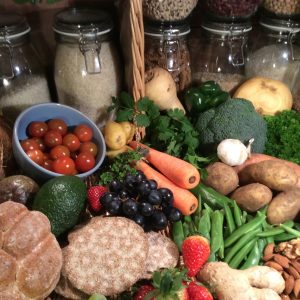 Our first line of defence, when considering immunity, is to support our micro biome’s equilibrium (and thus also our health and vitality through optimum nourishment and resistance): for example, eating nutritionally rich, fresh, seasonal, unrefined, organic whole foods, especially green vegetables, fruits, nuts, beans and other legumes, fermented foods, and so on; drinking plenty of water to hydrate and oxygenate our cells, and flush out waste material from our system; also, fresh air, sunlight (photochemical formation of vitamin D), walking (movement and motion) and gentle exercise (to stimulate peristalsis in the gut, and stimulate the lymphatic system, to remove waste products efficiently from our body). A plants micro biome can also feed ours, hence the advisability of leaving the skin on organic vegetables and fruits, and eating these raw or just lightly cooked.
Our first line of defence, when considering immunity, is to support our micro biome’s equilibrium (and thus also our health and vitality through optimum nourishment and resistance): for example, eating nutritionally rich, fresh, seasonal, unrefined, organic whole foods, especially green vegetables, fruits, nuts, beans and other legumes, fermented foods, and so on; drinking plenty of water to hydrate and oxygenate our cells, and flush out waste material from our system; also, fresh air, sunlight (photochemical formation of vitamin D), walking (movement and motion) and gentle exercise (to stimulate peristalsis in the gut, and stimulate the lymphatic system, to remove waste products efficiently from our body). A plants micro biome can also feed ours, hence the advisability of leaving the skin on organic vegetables and fruits, and eating these raw or just lightly cooked.
The boundaries between physical, psychological and emotional (body, mind, and spirit) often overlap. Indeed, feeling happy, relaxed and calm, positive and optimistic demonstrably influences physical function; heart rate, blood pressure, cortisol levels, endorphin release, digestion, and so on. Therefore, our second line of defence, in terms of immunological support and healthy function, is our state of ‘being’ – ‘being in stress’ or ‘being in equanimity’, ‘being in fear’ or ‘being in peace’. Indeed, we are often reminded that unconditional ‘love’ is an optimum state of ‘being’. Our state of ‘being’ influences our state of ‘body’.
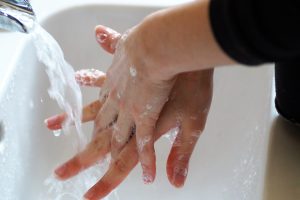 Hygiene, of course, is another line of defence. That is cleanliness, soap and water, rather than obsessive sterilisation. Observation of our micro biome, as already established, demonstrates that microbial co-existence is the background reality; far from being harmful, we actually thrive in their presence – our micro biome plays a significant role in fighting invading pathogens; we also develop immunity through coming into contact with microbes. There are times, though, when our defence mechanisms are compromised, through illness, stress, shock, anxiety, poor diet, lack of sufficient sleep, among other reasons, and our resilience weakens, and this is when complementary interventions may be supportive.
Hygiene, of course, is another line of defence. That is cleanliness, soap and water, rather than obsessive sterilisation. Observation of our micro biome, as already established, demonstrates that microbial co-existence is the background reality; far from being harmful, we actually thrive in their presence – our micro biome plays a significant role in fighting invading pathogens; we also develop immunity through coming into contact with microbes. There are times, though, when our defence mechanisms are compromised, through illness, stress, shock, anxiety, poor diet, lack of sufficient sleep, among other reasons, and our resilience weakens, and this is when complementary interventions may be supportive.
Essential oils to strengthen immunity
To combat and manage COVID 19, Shi et al (2020) suggest the immune system should be boosted during the first and second stage of infection, when there is better chance the infection can be more easily contained and controlled, but they state that the immune system should be suppressed during the inflammatory phase; at this stage, oxygen uptake is critical and can be negatively compromised by over reaction of the immune system.
NB: Essential oils should definitely NOT be applied during the inflammatory third stage of infection, that is, when infection spreads to the lungs (among other reasons, their antimicrobial and anti-inflammatory actions are superseded by the compromised function of the lungs).
While essential oils should definitely not be used during the third stage of Coronavirus, they may usefully be employed as preventatives, particularly in terms of managing hygiene, and during the very early phases of infection. However, just as there isn’t an identified specific drug, or vaccine, that might combat the virus (or in deed other specific viruses – viruses constantly mutate), neither is there an identified essential oil or essential oil component that, so far, demonstrates proven, specific direct effectiveness against COVID 19 or the thousands of mutant strains that now exist.
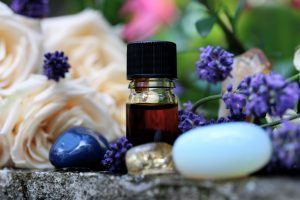 However, all essential oils possess anti-microbial properties, to some degree. Some essential oils possess broad-spectrum bactericidal and anti-viral qualities, while others are more specific in their action, depending on the chemical composition of the essential oil and the type of microbe; broad-spectrum in this context does not mean a single essential oil or blend of essential oils will kill all viruses or all bacteria. Essential oils are, even so, generally and variously antiviral, anti-bacterial, anti-fungal, anti-inflammatory, mucolytic and tissue regenerating, among other things. Blending certain essential oils together can potentiate their strength and increase their range of action.
However, all essential oils possess anti-microbial properties, to some degree. Some essential oils possess broad-spectrum bactericidal and anti-viral qualities, while others are more specific in their action, depending on the chemical composition of the essential oil and the type of microbe; broad-spectrum in this context does not mean a single essential oil or blend of essential oils will kill all viruses or all bacteria. Essential oils are, even so, generally and variously antiviral, anti-bacterial, anti-fungal, anti-inflammatory, mucolytic and tissue regenerating, among other things. Blending certain essential oils together can potentiate their strength and increase their range of action.
Essential oils, thus, work well preventatively, staving infection and pathogenic invasion, and are especially useful during the early stages of infection, ‘nipping in the bud’ opportunity for proliferation. In this way, essential oils support the immune system. They also support hygiene. They alleviate symptoms, such as those associated with colds and ‘flu; for example, headaches, nasal and sinus congestion, muscle aches and pains, insomnia, depression and anxiety. Further, unlike conventional antibiotics, essential oils do not disrupt the body’s natural micro biome.
 Essential oils also instigate psycho-emotional responses that may potentially instil a sense of feeling peaceful and calm, uplifted and grounded; optimal states that are shown to support efficient function of the immune system.
Essential oils also instigate psycho-emotional responses that may potentially instil a sense of feeling peaceful and calm, uplifted and grounded; optimal states that are shown to support efficient function of the immune system.
So, essential oils may aid and support resilience in various ways.
Some of the most potent anti-microbial essential oils include:
Cinnamon bark and leaf, Clove bud and leaf, Eucalyptus globulus, Pine, Tea Tree and Thyme, among others (these oils must be applied with caution because they are potential sensitisers and skin and mucous membrane irritants).
However, remember, no matter how valuable they are, essential oils are not ‘cure-alls’. They are, none-the-less, valuable integrated components that may significantly contribute to holistic health and wellbeing.
See here for advice about applying essential oils safely and effectively:
Measuring Essential Oils for Personal Application
Books
Essential Oils for the Whole Body
Essential Oils for Mindfulness and Meditation




References (alphabetical)
Bibliography
 AromaWeb Essential Oils for the Whole Body book review. Click here to read.
AromaWeb Essential Oils for the Whole Body book review. Click here to read.
“Enriched with numerous tables, charts and color photographs, Essential Oils for the Whole Body is a comprehensive essential oil guide that is well suited for use by those who are new to working with essential oils and who are eager to obtain a solid foundation in anatomy, olfaction, absorption, applications and essential oil safety. It is equally well suited for aromatherapy students and practitioners for use as a reference work or to supplement their knowledge on safety considerations, olfaction and anatomy.” Read more….
AromaWeb features hundreds of objective, brand-neutral essential oil guides, articles, lists, oil profiles, tips, blends, recipes, book reviews and directories.
AromaWeb, (www.aromaweb.com) is operated by AromaWeb, LLC, a Michigan (USA) corporation presided by and operated by its founder, Wendy Robbins.
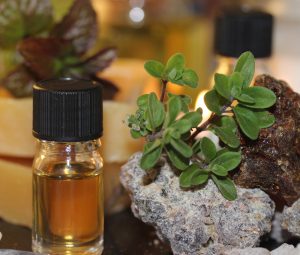
Heather Dawn: Godfrey. P.G.C.E., B.Sc. (Joint Hon)
I originally studied the principles and practice of a number of complementary medicine modalities in a bid to understand their philosophies and methods. In so doing I discovered a common thread between all: that is, energy, in its various forms and manifestation, but especially as a quintessential constant.
Design or coincidence? Meditation came to my awareness when I was a teenager in the early ‘70’s, while searching for my ‘truth’ and trying to make some sense of the ‘world’ and my ‘purpose’ and ‘place’ within it. I realise now, even more than I did at the time, that learning to meditate was a gift bestowed; this simple process of being ‘present’ and aware grounds and gently anchors my psyche in ways I cannot always find the words to explain. And, because one path often leads to another, ‘alternative medicine’ (as it was termed in those days) seamlessly eased gently alongside; the common underpinning tenets of one complementary to the other. Thus I also discovered that practicing meditation lends experiential insight to the subtle principles and expressions of many ancient healing and wellbeing practices; my body truly is my temple as well as my vehicle, and earth, also a gift, is a garden of abundant nourishment and awe; blessings deserving reverent respect, nurture and care.
Of all the complementary medicine modalities I studied, essential oils resonated with my ‘way of being’ and personality the most. This is not to say, however, that essential oils ‘stand alone’ or are better than other integrated modalities, because each modality brings it’s own significant dynamic and special value in terms of holistic wellbeing and health. In reality, essential oils straddle many principles and practices, from phyto-chemistry and botany, to psycho-emotional-spiritual and ethereal; an aspect of their appeal to me. Alongside their subtle and creative dynamics, the chemical components of essential oils present clearly observable, identifiable, measurable physical properties and qualities, evidenced through extensive research exploring their benefits.
For example, essential oils and their components are anti-microbial, skin and wound healing, they are shown to positively alleviate psycho-emotional states, such as mild anxiety and depression, and to stimulate cognitive function, aid mental alertness, concentration, clarity of thought, and memory. They revitalise and aid regeneration of skin tissue, support the immune system. They are attractant, repellent and protective (as they are within plants). Essential oils and their components are used to enhance and protect the integrity of many manufactured foods and household products; they add flavour and increase the shelf life of foods, mask unpleasant tastes and odours, create pleasing and alluring scents, and more.
Applying Essential Oils Holistically
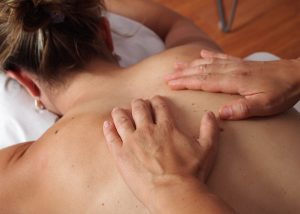 Combined with massage (or soft tissue manipulation), the therapeutic qualities of essential oils may be potentiated. Massage warms surface tissues, aids the circulatory (lymph and blood), nervous and immune systems, and supports absorption of essential oil molecules into the deeper layers of skin and circulatory system, from where they are transported throughout the body.
Combined with massage (or soft tissue manipulation), the therapeutic qualities of essential oils may be potentiated. Massage warms surface tissues, aids the circulatory (lymph and blood), nervous and immune systems, and supports absorption of essential oil molecules into the deeper layers of skin and circulatory system, from where they are transported throughout the body.
I am inspired by the sensual (‘scentual’), psycho-emotional-spiritual influence of essential oils, and their ability to tap into and connect to deep intrinsic feelings, moods, emotions, and memories, to create ambiance, to physically restore, rejuvenate, repair, and protect the whole body, from physical to subtle.
Collectively my books enable the reader to go on their own journey of discovery, to apply essential oils safely and effectively with maximum benefit.
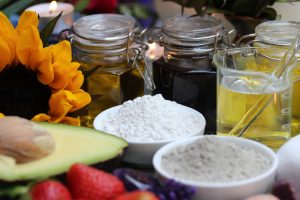 How do I use essential oils? I use essential oils in various ways. ‘Less’ is often ‘more’ when applying essential oils; very small amounts can be incredibly effective.
How do I use essential oils? I use essential oils in various ways. ‘Less’ is often ‘more’ when applying essential oils; very small amounts can be incredibly effective.
It is easy to become chemically saturated with a product, any product, if it is overused, but especially essential oils because they are so concentrated.
Thus, essential oils are best applied in moderation, varying the oils used; for example, I don’t use the same oil repeatedly, I select alternatives and vary the oils I blend together – doing this reduces potential for sensitisation
I wear small amounts of essential oil as perfume on my clothes or in my hair, rather than on my skin. I add small amounts of essential oil to skin care remedies, and make up non-scented creams, lotions and ointments to allow for essential oil breaks – remember, carefully selected vegetable oils have amazing skin care qualities of their own – and apply the same principle for face-masks and hair products (non-scented shampoo or conditioner). This way, the benefits of essential oils are fully realised without saturating the body.
Some oils are best kept as first aid remedies and applied if and when required – tea tree and lavender are good first aid standby’s.
Using Essential Oils as household cleansers
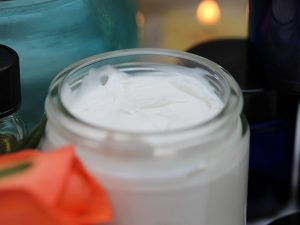
Environmental perfumes instil an ambience, a particular theme or mood, when gently diffused into the atmosphere in inspired bursts on occasion.
Essential oils seem far too precious to use as house cleaners (see below), however, they are valuable ‘fumigants’ – dried herbs, such as sage, can be ‘smoked’ or ‘smudged’ to the same end – close doors and windows for up to thirty minutes during fumigation and leave the room, then return and open up windows and doors.
Daily cleanliness and hygiene are better served with soap and water – we build our immune system through coming into contact with germs and bacteria and by allowing certain minor infections and illnesses to ‘run their course’; the troops are more effective when reserved for ‘battle’ rather than a minor skirmish. Gentle oils, such as lavender, can be applied moderately as preventives (but, even so, still not used constantly).
Using Essential Oils in food
I might use one or two drops of an essential oil to flavour foods or deserts, especially citrus oils, peppermint or, extravagantly, rose. However, I firmly believe that plants, herbs, spices and edible flowers are best consumed in their whole-plant form, either fresh or dried; flavonoids and minerals are not distillable, but significantly contribute to a plants nutritional, healing, and anti-oxidant value.
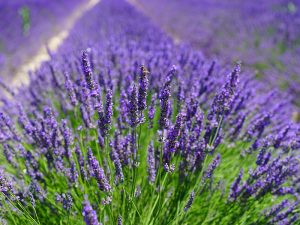 Hundreds of pounds of plant material is required to produce a relatively small amount of essential oil, thus, it is important to be mindful of the ecological footprint incurred when producing and consuming essential oils (such as, sustainable farming or wild harvest methods, sourcing and using locally grown and distilled essential oils, optimum distillation conditions, and so on). Nature provides essential oils in very small amounts in their natural form; thus, we should take a ‘leaf’ from natures book and use essential oils sparingly and sustainably, reserving their intense use for acute short-term scenarios (such as, occasional environmental cleansing and fumigation, or remedies for ‘flu, infections, viruses, and to support mood and emotion as and when required, and so on – perfumes should be worn sparingly, subtly, as a treasure, a lovely gift).
Hundreds of pounds of plant material is required to produce a relatively small amount of essential oil, thus, it is important to be mindful of the ecological footprint incurred when producing and consuming essential oils (such as, sustainable farming or wild harvest methods, sourcing and using locally grown and distilled essential oils, optimum distillation conditions, and so on). Nature provides essential oils in very small amounts in their natural form; thus, we should take a ‘leaf’ from natures book and use essential oils sparingly and sustainably, reserving their intense use for acute short-term scenarios (such as, occasional environmental cleansing and fumigation, or remedies for ‘flu, infections, viruses, and to support mood and emotion as and when required, and so on – perfumes should be worn sparingly, subtly, as a treasure, a lovely gift).
It takes 35 pounds of lavender flowers to produce just 15ml of essential oil (or approximately 300 drops), 2,500 to 4,000 kg of rose petals to produce just 1 kg of rose essence. Just one drop of essential oil is equivalent to 15-40 cups of medicinal tea or up to 10 teaspoons of tincture.
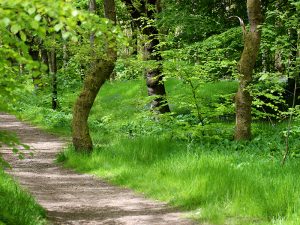
Balance and variety is key in terms of maintaining health, wellness and fitness. This can be achieved in various ways: meditation; walking in nature; yoga and gentle stretching exercises.
I confess I am not a ‘sporty person’ and have never enjoyed going to the gym, but benefit from the flow of movement through walking and doing gentle exercise. I have been a vegetarian since I was seventeen and try to eat mainly fresh whole foods – although I do love chocolate.
Essential oils are my companions, but I apply these in respectful moderation.
I try to balance my time and activity so I move my mode between working, resting, nourishing, socialising, exercising, creating, and helping. I don’t like to tell anyone else how to live their lives, but I think we help each other by being consciously compassionate, living from our best intention, and ’being present’.
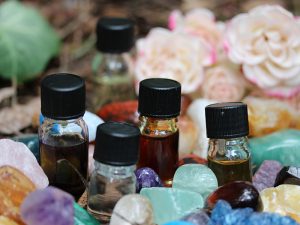 You will find much more information about about essential oils here:
You will find much more information about about essential oils here:
My books provide comprehensive information about applying essential oils safely and effectively (look out for my next book, Healing with Essential Oils, which will be published by Inner Traditions Bear & Co. early 2022).
Find out more about my books here


Aromatherapy and the therapeutic application of essential oils, along with other remedial therapies increasingly included within an integrated holistic healthcare model, have surged into the foreground as viable methods of maintaining and managing wellness and wellbeing, and consequently, also, commercial popularity and availability.
This article aims to clarify information about the safe use and application of essential oils.
The term essential ‘oil’ is itself misleading. They are considered ‘essential’ in the sense that they carry a distinctive scent, or essence, of the plant (European Chemicals Agency 2017). The term ‘oil’ relates to their behaviour in water. They are ‘oil-like’ in that they generally do not combine or ‘dissolve’ in water (although some ‘water-loving’ components do, hence floral waters and distillates, the majority of components do not). They are volatile (non-fixed) lipophilic hydrophobic liquids of varying viscosity comprising of very small (to varying degrees) molecules. Essential oils are mostly lighter than water, therefore, will float on the surface, or in some instances, where they are heavier and denser than water, the essential oil will sink (for example, vetivert and myrrh). While many molecules quickly evaporate from the skins warm, moist, surface, others penetrate with ease.
On the other hand, vegetable ‘oils’ are known as ‘fixed oils’; that is, they are non-volatile (they do not evaporate), are dense (thick), with a greasy texture, and comprise of larger molecules than those found in essential oils; they form a film on the surface of skin, and absorb into the superficial tissue layers. They aid moisturisation of skin (that is, they slow down the rate of water loss / evaporation from the skins surface – they create a barrier), and subsequently also slow down the evaporation rate of (volatile) essential oils; thus, more essential oil molecules remain available to penetrate skin tissues and the circulatory system embedded below. So, vegetable oils form a barrier, they dilute essential oil molecules, and facilitate wider dispersion across the epidermis, thus, protecting the skin from the irritant effect of neat concentrated essential oils. Vegetable oils also have skin-supporting qualities of their own (anti-inflammatory, barrier repair, wound healing, anti-microbial, permeability enhancing). Please note: mineral oil and products containing other petroleum derivatives, such as vaseline, remains like an ‘oil slick’ on the skins surface, and tends to clog pores and hair follicles.
Essential oils are highly concentrated chemical derivatives extracted from various parts of plants; leaves, twigs, blossoms and flowers, fruits, seeds, bark, roots, and so on. For example:
· It takes 2,500 – 4,000 kg (5,511 – 8,818 pounds) of rose petals to produce 1 kg (2.2 pounds) of essential oil.
· It takes 1.4 kg (3 pounds) of fresh lavender to produce 15ml (or approximately 300 drops) of lavender essential oil.
· One drop of essential oil is equivalent to 15-40 cups of medicinal tea, or up to 10 teaspoons of tincture (Krumbeck 2014).
· One drop of peppermint essential oil is equivalent to 26 cups of peppermint tea (one to two cups of peppermint tea is usually sufficient to quell mild indigestion and stomach discomfort).
Thus, essential oils must be used and applied in moderation and with careful consideration. Herb teas are often sufficient remedy for digestive disorders. Very small amounts of essential oil is required to instigate a response.
In terms of skin contact, remember, essential oils alone are not emollient and they certainly do not have an ‘oily’ texture; they are not lubricant, greasy, nor do they form a barrier. This is why essential oils should always be dispensed in an emulsifying medium (as above, and below), to soothe and protect skin, before being added to a bath (water itself is very drying to skin, which can exacerbate irritation), and they should never be added to water and consumed internally as this is virtually the same as consuming them neat (water offers no protection to the lining of the mucous membrane, stomach, or other organs of the digestive system; unless an oily or fatty medium is used, dispersants, such as alcohol, are not protective either).
NB: Essential oils prescribed for internal ingestion by a medically trained healthcare professional, pharmacist, or herbalist (and this is the only context in which oral or rectal ingestion of essential oils should be administered), are always interfused with a fixed vegetable oil and suspended in plant-based (hypromellose) or gelatin (collagen from animal skin or bones) capsules (the former being preferable), and are only administered following a thorough consultation ‘work up’; thus, dose is controlled, safe, and appropriate.
Being highly volatile, essential oil components rapidly vaporise as they bind to moisture within the skin and surrounding atmosphere. Applied neat to the skin they are thus drying and potential irritants and sensitisers, so must be dispersed in a suitable carrying medium before they are applied to the body; for example, in vegetable oil (as above), cream, lotion, ointment or gel. Certain essential oil molecules can bind to proteins within the skin and may instigate an allergic reaction (whether applied neat or in a carrier medium).
Although Tea Tree and Lavender may be applied neat to very small areas of skin as first aid remedies for insect bites, minor burns, spots etc., repeated long term application is not recommended; these oils are the exception but have equal propensity to cause skin irritation if overused.
Essential oils absolutely must not be taken internally unless prescribed and administered by a primary healthcare practitioner, pharmacist, or herbalist who is also a trained and qualified essential oil practitioner; I do not advocate oral ingestion of essential oils in any other circumstance.
Oral ingestion
There are numerous cautionary contributory factors to consider when ingesting essential oils orally. It is likely that when administered orally 100% of the essential oil ingested will be absorbed into the body’s internal system (unlike skin absorption, where the epidermis acts as a semi porous barrier), so dose is very significant. Essential oils should never be swallowed neat because they can cause severe mucous membrane irritation.
Although essential oils metabolise and are eliminated or excreted from the body quite quickly, there is increased risk of causing renal (kidney) and hepatic (liver) damage and internal irritation to other accessory organs of the digestive system. Some essential oils are oral toxins.
There is also increased risk of negative chemical interaction between the constituents of essential oils and other prescribed medication that may be being taken at the same time, which might potentiate or exacerbate their action. For example, sweet birch or wintergreen essential oil should never be administered internally if a person is also taking Warfarin, as these essential oils dangerously increase the anti-coagulant and blood thinning potential of Warfarin. In other examples, Tisserand and Young (2014 p 58) warn of possible incompatibility between oral ingestion of chamomile German (blue), chaste tree, cypress (blue), jasmine sambac absolute and sandalwood (W. Australian) essential oils (Latin names not given) and tricyclic antidepressants, such as imipramine and amitriptyline, or opiates such as codeine, because these essential oils can potentiate the action of these drugs and other CYP1A2, CYP2C9, CYP2D6, CYP3A4 substrates (inhalation and topical dermal application of balsam poplar, chamomile blue, sage and yarrow may also potentiate the action of CYP2D6 substrate drugs).
Skin reaction
There are three main forms of skin reaction to essential oils:
Irritation
Irritation may manifest as localised inflammation, affecting the skin or mucous membrane. The respiratory tract is particularly susceptible to inflammatory and non-inflammatory irritation from essential oils (experienced as drying, burning, stinging, tingling, tickling). Some essential oils are useful for conditions affecting the respiratory system (sore throats, bronchitis etc.) but should be applied in low doses for a short duration when they are applied as inhalants, to avoid respiratory irritation. Phenols and aromatic aldehydes tend to be the most irritant essential oil compounds. For example, eugenol (basil, cinnamon bark, clove), thymol (basil, thyme), carvacrol (thyme, oregano, savoury), cinnamic aldehyde (cinnamon leaf).
Sensitisation
Sensitisation is not the same as ‘sensitive skin’. Sensitisation is a contact hypersensitive or allergic reaction and/or severe irritation that involves the immune system (T-lymphocytes and macrophages). T-lymphocyte cells become sensitised through an adaptive, exaggerated or inappropriate immune response; once sensitised, even a small amount of the potential antagonist substance can cause a reaction. Sensitisation is not dose dependent and is difficult to predict. Also, a sensitised reaction may be delayed, symptoms manifesting sometime after application.
The saturation point of chemical exposure can be reached through contact with products other than essential oils, such as cosmetics, perfumes, household cleaning materials etc.; there can also be a potential insidious cumulative effect especially where the same products are used repeatedly.
Symptoms of sensitisation are various and may include skin irritation, rashes, headaches, migraine, anxiety, heart palpitations, feelings of unease, shortness of breath and dry mouth.
All essential oils are potential sensitisers and therefore should be applied in moderation, with regular breaks or abstinence from use (two to three weeks use followed by a week’s non-use), and periodical rotation of the essential oils applied (substituting one for another appropriate oil), especially if using regularly over a long period of time. Essential oils should never be applied ‘neat’ to skin
Toxicity
Toxicity refers to the strength of a poison and the degree to which a substance can damage or destroy an organism, whether the whole organism, such as a plant or animal, or a substructure of the organism, such as a cell or organ, for example, liver (hepatotoxicity), kidney (nephrotoxicity). Damage may be reversible or irreversible, depending on the level of biological disruption and whether the regeneration capacity of the affected cells has been compromised.
Toxicity is dose dependent and is influenced by factors such as the route of administration (skin absorption, ingestion, inhalation), length of time of exposure, frequency of exposure, the genetic makeup of the individual and their general state of health. Localised toxicity usually affects the organs of elimination (stomach, liver, kidneys, intestines, lungs and skin). A toxic reaction instigated by essential oil molecules can manifest at the point of topical application or systemically.
Some essential oil molecules, which may otherwise be non-toxic, can bind with compounds contained in medication (most of which are toxic substances) or certain foods, or with certain enzymes and be metabolised into a toxic substance or relocate to an area within the body where they may cause damage. Camphor and methyl salicylate compounds, and clove, cinnamon and eucalyptus essential oils are most frequently cited as causes of systemic toxicity in humans. Most reported essential oil poisoning incidents involve children under six years old who accidentally ingest the oils.
Chemical components with in essential oils can become toxic when they oxidise and degrade. Old essential oils are more likely to be toxic than freshly extracted, appropriately stored, essential oils (especially citrus and pine oils). Essential oils containing phenols, fragrant aldehydes, and oxidised terpenes are the main culprits for causing dermal toxicity and irritation.
Photo-toxicity
This is an excessive reaction to sunlight (or UV light, including UV light emissions from sun-tanning lamps) induced by certain chemicals present within the superficial layers of the skin. Phototoxic substances (such as furanocoumarins found in a few essential oils, for example, bergamot and angelica root) absorb UV light, which in turn causes the production of abnormally dark pigmentation (brown patches), that may last for years, and reddening and burning of the surrounding skin, which is often slow to heal. A phototoxic reaction only occurs if the sensitising agent is present. Avoid phototoxic essential oils on skin exposed to sunlight or UV light and sun-tanning lamps.
In conclusion
When applied sensibly and in moderation, essential oils are extremely beneficial. However, they can also cause harm, especially when applied inappropriately. Always check the therapeutic effects and safety information of an essential oil before applying it, especially if you are taking medication (prescribed or ‘over the counter’), or are receiving medical treatment, or have a compromised immune system, or have allergies or sensitivities to products, metals, foods and other substances. Do not apply essential oils to other people unless you are qualified to do so. Ensure the authenticity and age of your essential oil before applying (once opened, essentials have a 12 month shelf life, citrus oils, 6 months – unopened and stored correctly, then 2 years). Store in a cool, dark place away from sunlight (such as a fridge – although some essential oil solidify, rose for example, they return to a liquid state at room temperature). Always ensure lids are replaced immediately after use. Wash any residue essential oil from your fingers to avoid contact with your eyes or other sensitive areas of your body.
Example of an extreme adverse reaction:
https://www.allure.com/story/negative-reaction-to-essential-oils-tanning-bed
https://www.facebook.com/graetel.anderson/posts/10100850320518299
Reference
For more details and information about the safe application of essential oils, and much much more, please refer to:
Essential Oils for the whole Body

Essential Oils for Mindfulness and Meditation

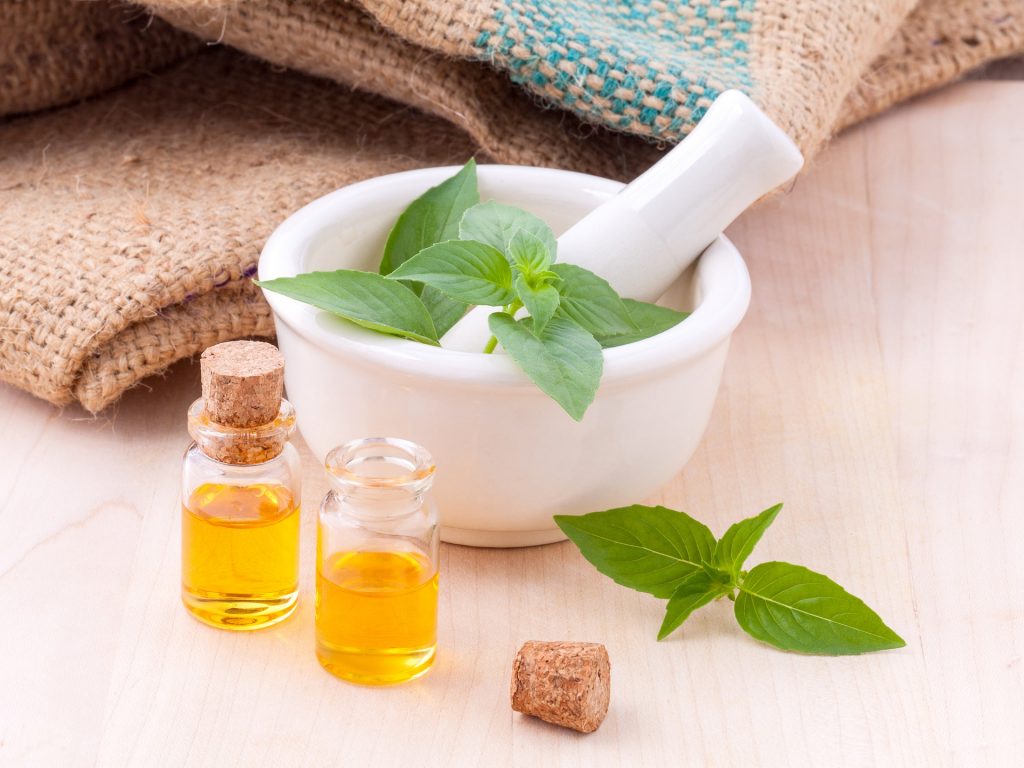
The history of essential oils is inseparably entwined in the historical evolution of medicine, evidenced through references found in ancient medicinal texts, treatises, artwork, imagery and artefacts left by civilisations living over 5,000 years ago.
Applied in the form of fumigants, incense, cleansers, antiseptics, antibiotics, bactericides and preservatives, as well as psychosomatic, hedonistic perfumes, not only worn to adorn but also to punctuate and accentuate rite and ritual, to protect and to symbolise intention, essential oils have accompanied us, like guardians and companions, on our ever-evolving journey through time and life, playing a vital role in our survival.
Skills and knowledge of remedies, lifestyles and ancient systems of medicine have passed from one generation to another, many still relevant, referred to and practiced today, particularly in countries where the cost of modern medicine is prohibitively expensive; examples include Oriental, Ayurveda, Middle Eastern and Greek Tibb, Shamanic and local herbal medicine – the omniscient existence of a life force, Ch’I, Prana or élan vital, threading through the philosophy of all.
Many modern herbal and complementary medicinal practices have evolved and developed from synthesis of these historically tested ancient healing systems, philosophies and practices and current knowledge and understanding of science, botany, biology and modern medicine. We bring forward the constant notion of ‘mind-body-spirit’, of the gross and subtle dynamics of existence, a seamless interplay between the internal and external environment, notions that prevailed until challenged by modern science.
During the 17th and 18th centuries, development of technology enabled focused scrutiny of microscopic entities. The body was increasingly viewed, detached from ‘spirit’, or ‘Being’, like a machine comprising separate parts; spirit could not be physiologically identified, therefore, was considered non-existent, or questionable, and mind and body were viewed as separate.
However, clearer understanding of anatomy and physiology, biology, botany, and organic chemistry has also served to separate out myth, superstition and misunderstanding, revealing the practical reality of the ‘way the world and universe works’. Many misguided notions surrounding health and cure, such as, leeching, ‘blood letting’, pleasing the ‘gods’, are subsequently dispelled in light of informed awareness. While others have been upheld, their value proven through consistent positive results that have stood the test of time
Scientific investigation, equipment and methodology does enable greater insight into the practical mechanism, integration, interplay, properties, components and chemistry of organic and inorganic matter, of the world around us and of the physical body, its healthy function, of viruses, germs, disease, reaffirming the significance of diet and lifestyle in terms of wellness and wellbeing and the supportive value of many ancient healing systems, such as, among others, acupuncture, herbalism, essential oils. The body is a territory which when appropriately nurtured and nourished (food, shelter, warmth, exercise, psycho-emotional attitude and community) is more resilient to attack or invasion, and in harmony (internal and external homeostasis).
Holistic health and wellbeing emerges to the foreground; the mind-body-spirit connection is acknowledged as significant. Bridging the pragmatic, nature-al and ethereal dynamics of life and existence, essential oils continue to be used for their protective (anti-microbial, anti-viral), restorative, rehabilitative, healing and hedonistic qualities, seamlessly providing physiological and psycho-emotional-spiritual support.
To learn more about essential oils:
Essential Oils for Mindfulness and Meditation